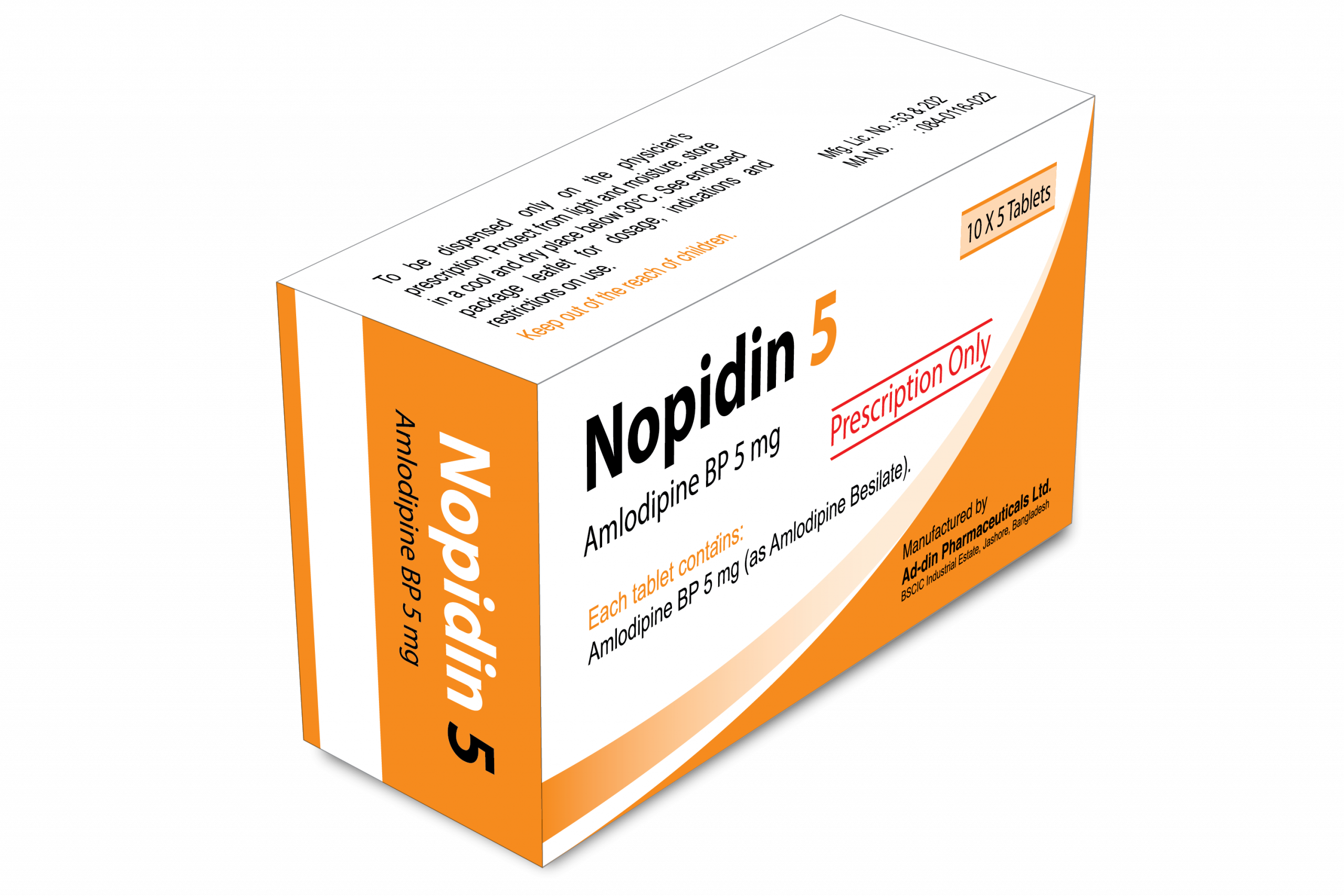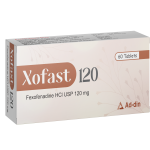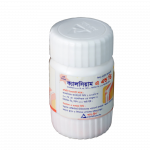COMPOSITION
Nopidin 5 Tablet: Each tablet contains Amlodipine BP 5 mg (as Amlodipine Besilate).
PHARMACOLOGY
Amlodipine is a dihydropyridine calcium-channel blocker, with a long duration of action, used for the treatment of hypertension and angina pectoris. Amlodipine influences the myocardial cells, the cells within the specialized conducting system of the heart, and the cells of vascular smooth muscle. Administration of Amlodipine results primarily in vasodilation, with reduced peripheral resistance, blood pressure and afterload, increased coronary blood flow and a reflex increase in coronary heart rate. This in turn results in an increase in myocardial oxygen supply and cardiac output.
INDICATION
Essential hypertension: Amlodipine is efficacious as monotherapy in the treatment of hypertension. It may be used in combination with other antihypertensive agents.
Angina pectoris: Amlodipine is indicated for the treatment of chronic stable angina pectoris and is efficacious as monotherapy. It may be used in combination with other antianginal agents.
Vasospastic angina: Amlodipine is indicated for the treatment of confirmed or suspected vasospastic angina. It may be used as monotherapy or in combination with other antianginal drugs.
DOSAGE AND ADMINISTRATION
The usual initial antihypertensive oral dose of Nopidin (Amlodipine) is 5 mg once daily with a maximum dose of 10 mg once daily. Small, fragile or elderly individuals or patients with hepatic insufficiency may be started on 2.5 mg once daily dose and this dose may be used when adding Nopidin (Amlodipine) to other antihypertensive therapy. Dosage should be adjusted according to each patient’s need. The recommended dose for stable or vasospastic chronic angina is 5-10 mg, with the lower dose suggested in the elderly and in patients with hepatic insufficiency.
CONTRAINDICATION
Nopidin (Amlodipine) is contraindicated in patients with known hypersensitivity to dihydropyridine (e.g. amlodipine, nifedipine, nicardipine, and isradipine).
PRECAUTION
General: Since the vasodilatation induced by Nopidin (Amlodipine) is gradual in onset, acute hypotension has rarely been reported after oral administration of Nopidin (Amlodipine). Nonetheless caution should be exercised when administering Nopidin (Amlodipine) with any other peripheral vasodilator particularly in patients with severe aortic stenosis. Caution should be taken in patients with heart failure & hepatic impairment.
SIDE EFFECTS
Nopidin (Amlodipine) is well tolerated. Headache, oedema, fatigue, nausea, flushing, dizziness, gum hyperplasia, erythema multiforme are reported.
DRUG INTERACTION
Digoxin : Absence of any interaction between amlodipine and digoxin in healthy volunteers has been documented in a controlled clinical study. Warfarin : An unpublished study in healthy volunteers indicates that amlodipine does not significantly alter the effect of warfarin on prothrombin time. Cimetidine: An unpublished clinical study indicated no interaction between amlodipine & cimetidine in healthy volunteers. Food: Food does not alter the rate or extent of absorption of amlodipine.
USE IN PREGNANCY AND LACTATION
Pregnancy: No data are available at the present time. Therefore amlodipine should not be prescribed in women known to be pregnant. Lactation: No data are available at the present time, so it is probably best for breastfeeding mothers to avoid the drug.
OVERDOSE
Symptoms: Available data suggest that large overdosage could result in excessive peripheral vasodilatation and possibly reflex tachycardia. Marked and probably prolonged systemic hypotension up to and including shock with fatal outcome have been reported.
Management: Clinically significant hypotension due to amlodipine overdosage calls for active cardiovascular support including frequent monitoring of cardiac and respiratory function, elevation of extremities, and attention to circulating fluid volume and urine output.
A vasoconstrictor may be helpful in restoring vascular tone and blood pressure, provided that there is no contraindication to its use. Intravenous calcium gluconate may be beneficial in reversing the effects of calcium channel blockade. Gastric lavage may be worthwhile in some cases. In healthy volunteers the use of charcoal up to 2 hours after administration of amlodipine 10 mg has been shown to reduce the absorption rate of amlodipine. Since amlodipine is highly protein-bound, dialysis is not likely to be of benefit.
STORAGE
Store in a cool and dry place, protect from light and moisture. Keep out of the reach of children.
PACKING
Nopidin 5 Tablet: Box containing 10 x 5 tablets in blister pack.






